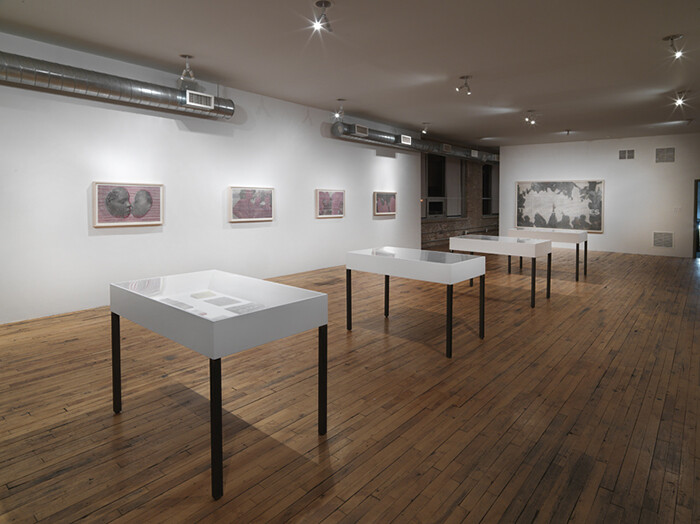It is tempting to venerate images of bodies gathered, simply because they are seductive. They contain the charge of all that is political—the possibility of power in conflict. For this reason, they appear consistently in the mediated distribution channels and propaganda produced by the powerful and the powerless alike, ranging from cable news to social media, serving as manipulated evidence of legitimacy, potential, and control that stands in for and tells the stories of political events. The appearance of such “image-myths” preoccupies John Sparagana’s recent body of work at Corbett vs. Dempsey.
In his 1960 socio-historical tome Crowds and Power, Bulgarian-born author Elias Canetti identifies a distinction between the open and closed form of a crowd. The open crowd is characterized chiefly by its desire to grow, and when growth ceases, it dissipates. Conversely, the closed crowd “renounces growth” and by putting up boundaries, it “creates a space for itself which it will fill.”(1) While the open crowd has impressive spontaneity, the closed crowd remains stable because it is such a controlled form of gathering that the crowd knows it can reform and reassemble as needed, and often at regular intervals.
The Houston-based Sparagana utilizes images of both open and closed crowds in his “Crowds & Powder” series of photographic collages. At first glance, the work struck me as simple… or easy, or familiar. Just generate a work from a picture of a crowd and instill your art with politics. But upon closer examination, complete with double takes and surprise encounters, a slow-read emerged, piquing my curiosity.
In Crowds & Powder: The Revolutionaries 3 (2013), the artist enlarges an image from a photographic spread in Time magazine covering the 2011 protests in Cairo’s Tahrir Square. He first “fatigues” the images by crumpling them and carrying them around in his pockets, repeating the process with multiple copies of the same magazine pages. He then slices the pages into hundreds of tiny squares, recomposing the image by joining the squares from different pages together. The sharp image thus becomes pixelated while being expanded at the same time, not unlike the process of digitally increasing the dimensions of a photograph with fixed resolution. The recombined image is enlarged, though clarity of detail is lost. Sparagana then applies gold-and-white oil stick to the paper in order to obscure a central portion of the crowd. Canetti describes such central cores as the “determination of movement,” representing the goal and origin of the “open crowd”; as he explains, “they have a goal which is there before they can find words for it. The goal is the blackest spot where most people are gathered.”(2) For Canetti, the collective’s inner core is the part that is intentional, and everything else is purely spontaneous.
In recent years, images replicated through viral circulation and reproduced in mass and social media have become undeniably significant for political movements like those in Egypt and throughout the Middle East and North Africa. In their efforts to gain legitimacy, solidarity, recognition, such movements actively produce images and are, in turn, produced by them. Exceeding the simple application of political content to the work of art, Sparagana’s critique becomes visible when he manipulates and reconfigures each image individually through collage. Grappling with politics as a category in scenes ranging from revolutionary Egypt to an assembly in Times Square and an unidentified street, some works emerge from the open crowd, pulsating from the center into something uncontrollable. Others, like Mercenary 2 (2013) and Kennedy Brothers 1 (2012), address the closed crowd—the controlled and intentional power that trades off the potential of spontaneous social power for concentrated and methodical politics. Through the expansion and obscuring of the images’ details, Sparagana dissects the event’s process of loss and transformation, which it must undergo in order to become an image-myth.
The “Crowds & Powder” exhibition concludes the gallery’s fall series, which also includes presentations of four different collections of books printed and painted by Arturo Herrera, as well as “Portraits,” painter Jackie Saccoccio’s first solo show in Chicago. Combined with its investment in regional art histories, Corbett vs. Dempsey is extraordinary in that it has a clear program with a special emphasis on neglected, mid-century works. It has a reason for being that is continuously renewed and rethought. If more spaces committed themselves consciously to such concerted efforts, the art world would be better for it.
1) Elias Canetti, Crowds and Power, trans. Carol Stewart (New York: Farrar, Strauss & Giroux, 1984), 16–17. 2) Canetti, 16.









